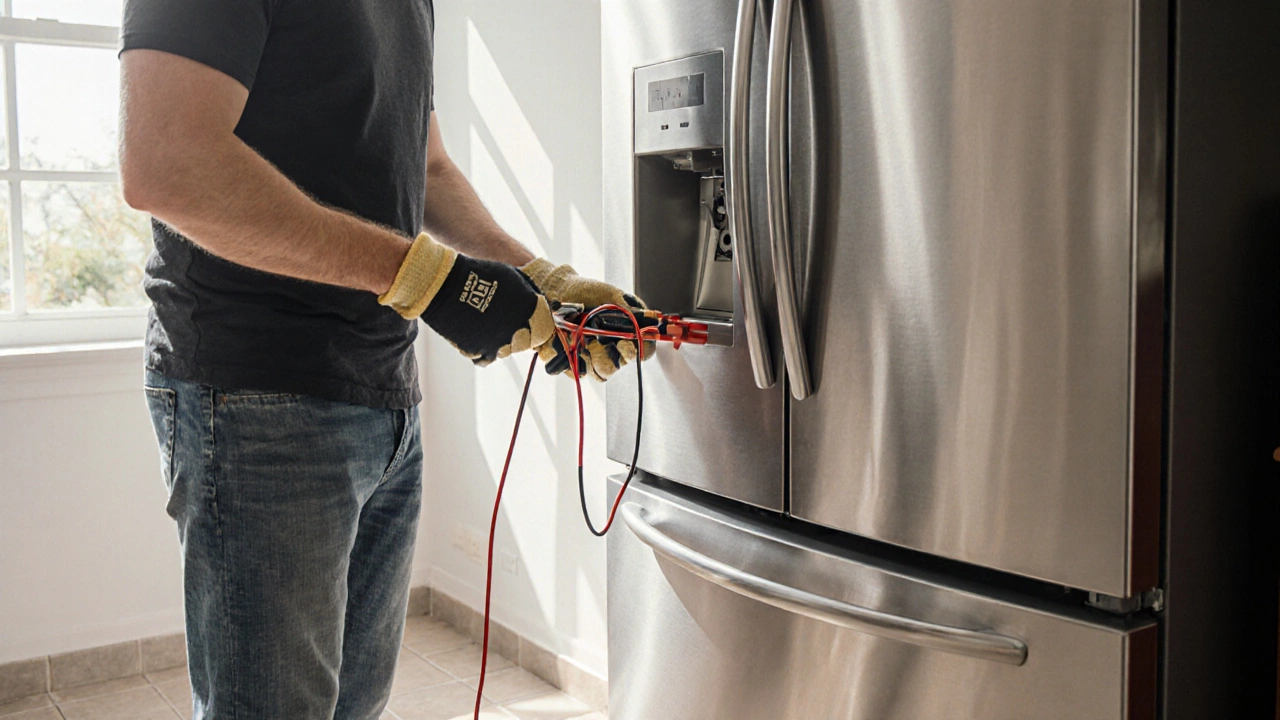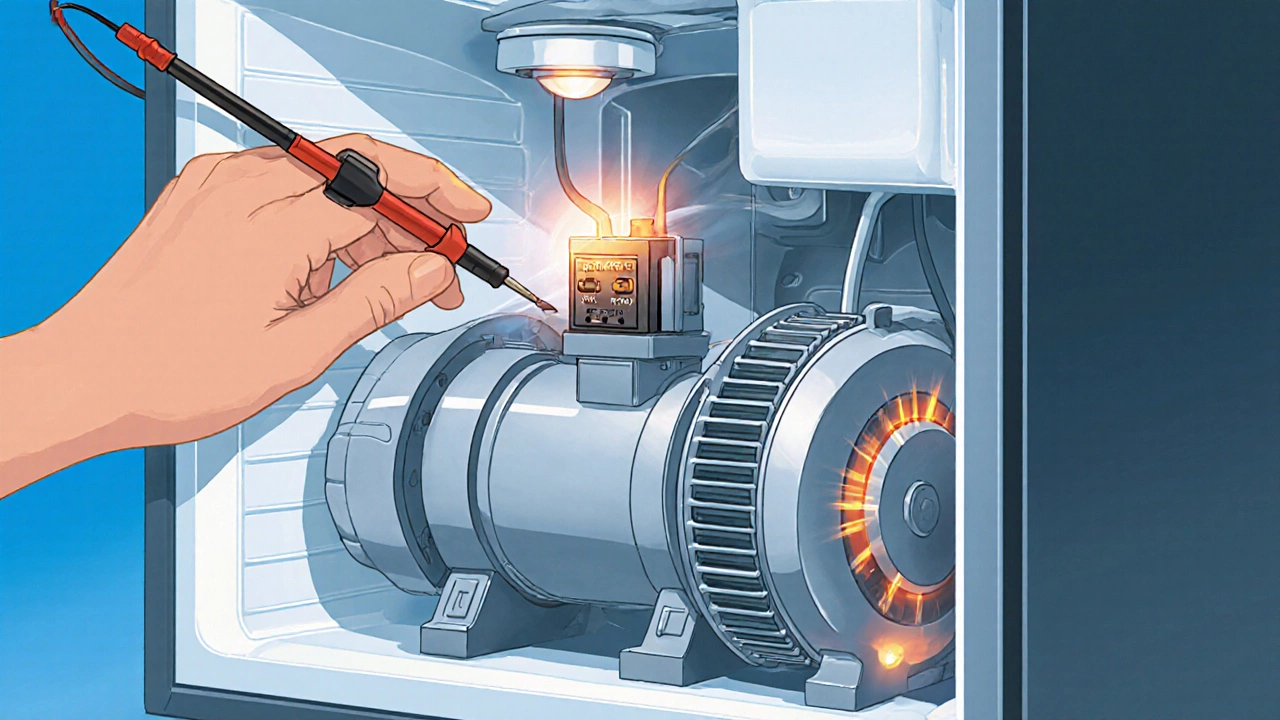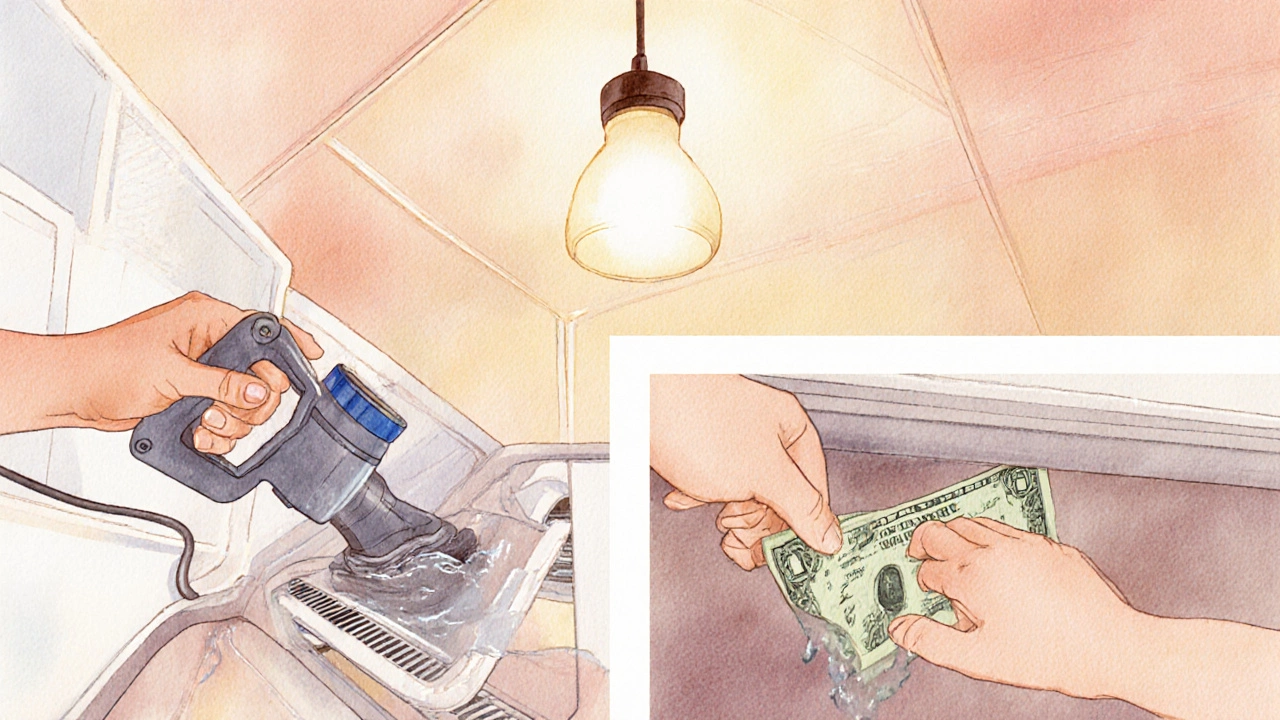
- 25 Oct 2025
- Gideon Thornton
- 0
When your refrigerator is a kitchen appliance that keeps food cold using a sealed system of refrigerant, compression, and heat exchange starts acting up, you might wonder if DIY fridge repair is doable. The short answer is: many common faults are within reach of a confident homeowner, as long as you follow a safe, step‑by‑step approach.
Why try a DIY fix?
Calling a technician can cost £80‑£150 per hour, plus parts markup. Even a modest repair that takes an hour can easily hit £120. If you have a basic tool kit, a little patience, and the right guidance, you can shave off that expense and gain the satisfaction of solving the problem yourself.
Safety first
Before you touch anything, always unplug the appliance. If your fridge uses a water line for an ice maker, turn off the supply valve. Refrigerant is sealed inside a closed system, but a damaged hose can leak, so avoid forcing any components apart. Wear insulated gloves when handling the condenser coils and keep a fire‑extinguisher nearby-just in case.
Essential tools for a DIY fridge repair
- Screwdriver set (Phillips and flat‑head)
- Nut driver or socket set (most compressors are secured with 13 mm bolts)
- Multimeter (to test voltage, continuity, and resistance)
- Flashlight or headlamp
- Cloth and gentle cleaner for coils
- Bucket and towels for any water spillage

Diagnosing the most common problems
Most fridge failures fall into five buckets: not cooling, too cold, noisy operation, water leaks, and excess frost. Pinpoint the symptom first; the fix usually follows.
1. Refrigerator not cooling
Start with the Compressor. It’s the heart of the cooling cycle, compressing refrigerant so it can release heat outside the cabinet. Use a multimeter to check the start relay and overload protector. If you hear a humming sound but the compressor never kicks in, the relay is likely dead.
2. Fridge too cold (or freezing
The culprit is often a faulty Thermostat (or temperature control board on newer models). Remove the thermostat cover, test for continuity at the set temperature, and replace if resistance doesn’t change when you turn the dial.
3. Loud or rattling noises
Check the Evaporator fan and the condenser fan motor. Debris or a worn bearing can cause grinding. Clean any dust, tighten loose screws, and spin the fan by hand-if it wobbles, replace it.
4. Water pooling at the bottom
Most leaks stem from a blocked or cracked Defrost timer or a broken door seal. Inspect the seal for tears; a simple silicone strip can restore the gasket. If the timer is stuck in the defrost cycle, the freezer will over‑defrost and spill water.
5. Frost buildup on the freezer wall
This usually indicates a malfunctioning defrost heater or a faulty defrost timer. Locate the heater element near the evaporator coil, test for continuity, and replace if open. A timer that never advances will keep the heater off, letting frost accumulate.
Step‑by‑step fixes for each issue
Below are concise procedures you can follow with confidence.
- Not cooling:
- Unplug the fridge and remove the rear access panel.
- Locate the start relay attached to the compressor.
- Use a multimeter: set to AC voltage, measure across the relay terminals while the fridge is plugged back in (be careful). No voltage? Relay is bad.
- Replace the relay-snap it into the compressor socket, reassemble, and test cooling over 24 hours.
- Too cold:
- Take off the interior temperature control cover (usually behind a small panel).
- Rotate the thermostat through its range; note resistance changes.
- If resistance stays constant, swap in a new thermostat of the same model.
- Noise:
- Pull the fridge away from the wall to access the fan grills.
- Unscrew the evaporator fan housing, clean dust with a vacuum brush.
- Spin the fan manually; any wobble means the bearings need replacement.
- Water leak:
- Inspect the door gasket; apply a thin bead of silicone if you see gaps.
- Check the drain tube at the back of the freezer-clear any clog with hot water.
- If water still pools, test the defrost timer for continuity; replace if faulty.
- Frost buildup:
- Access the evaporator coil by removing the freezer back panel.
- Test the defrost heater with a multimeter (should read low resistance, ~10‑30 Ω).
- Swap out a dead heater and verify timer advancement by listening for a click every 6‑8 hours.
When to call a professional
If you encounter any of the following, it’s wise to hand the job to a certified engineer:
- Leaking refrigerant - a gas leak requires a licensed technician.
- Complex electronic control boards that show intermittent fault codes.
- Repeated failures after you’ve already replaced the same component.
- Extensive corrosion on the compressor or sealed system.

Preventative maintenance checklist
Regular upkeep can keep most of the above issues at bay. Spend 10‑15 minutes a month:
- Vacuum the condenser coils (behind or underneath the fridge) to improve heat exchange.
- Wipe the door seals with a damp cloth and test closure with a dollar‑bill test.
- Check the temperature settings: 3‑5 °C for the fridge, ‑18 °C for the freezer.
- Inspect the water line (if present) for kinks or mineral build‑up.
- Listen for unusual sounds during the defrost cycle.
Quick comparison of common fridge issues
| Problem | Likely Cause | DIY Fix | When to Call Pro |
|---|---|---|---|
| Not cooling | Start relay or compressor failure | Replace start relay; test compressor | Compressor burnt out or noisy |
| Too cold / freezing | Faulty thermostat | Swap thermostat | Control board error codes |
| Noise | Fan bearing wear | Clean/fix fan motor | Compressor rattling |
| Water at bottom | Clogged drain or bad seal | Clear drain, reseal door gasket | Defrost timer stuck |
| Frost build‑up | Defrost heater or timer failed | Test/replace heater, check timer | Repeated frost after replacement |
Frequently Asked Questions
Can I replace a refrigerator compressor myself?
Replacing a compressor involves handling refrigerant, which is regulated in the UK. Unless you are a certified technician, you should not attempt it yourself. Focus on cheaper components first, like the start relay or thermostat.
Why does my fridge make a buzzing sound?
A steady buzz often comes from the compressor or the condenser fan running. If the sound is intermittent, it may be the defrost timer clicking. Check the fan blades for obstruction and listen for a deep humming from the compressor.
How often should I clean the condenser coils?
Every three to six months is ideal. Dust buildup forces the compressor to work harder, raising energy bills and increasing the risk of failure.
My freezer freezes but the fridge stays warm - what’s wrong?
A broken evaporator fan is a common cause. The fan circulates cold air from the freezer to the fridge compartment. When it stops, the freezer can stay cold while the fridge warms up.
Is it safe to use a hair dryer on a stuck freezer door seal?
Yes, gently heating the rubber with a hair dryer can soften it enough to reseat the seal. Avoid overheating, which can damage the gasket.




